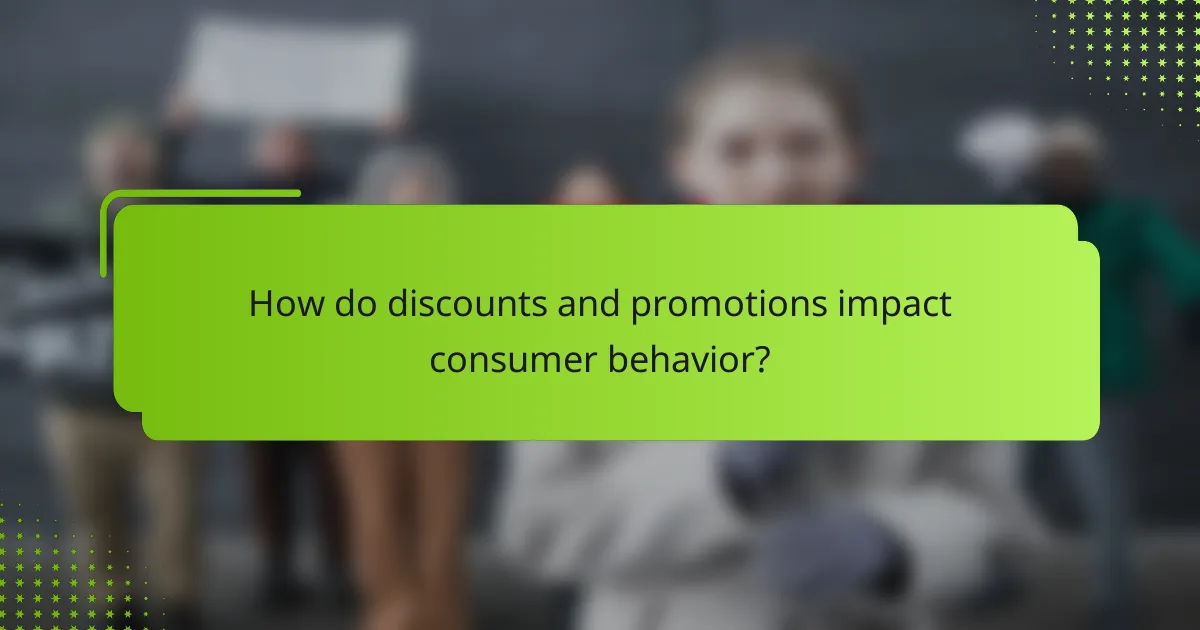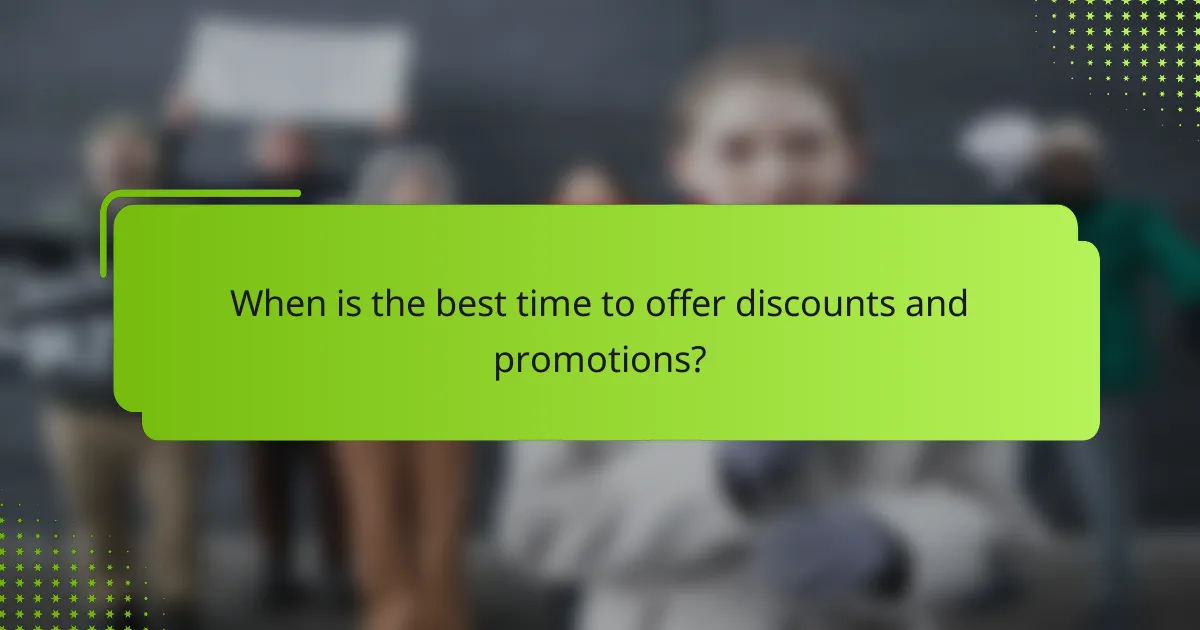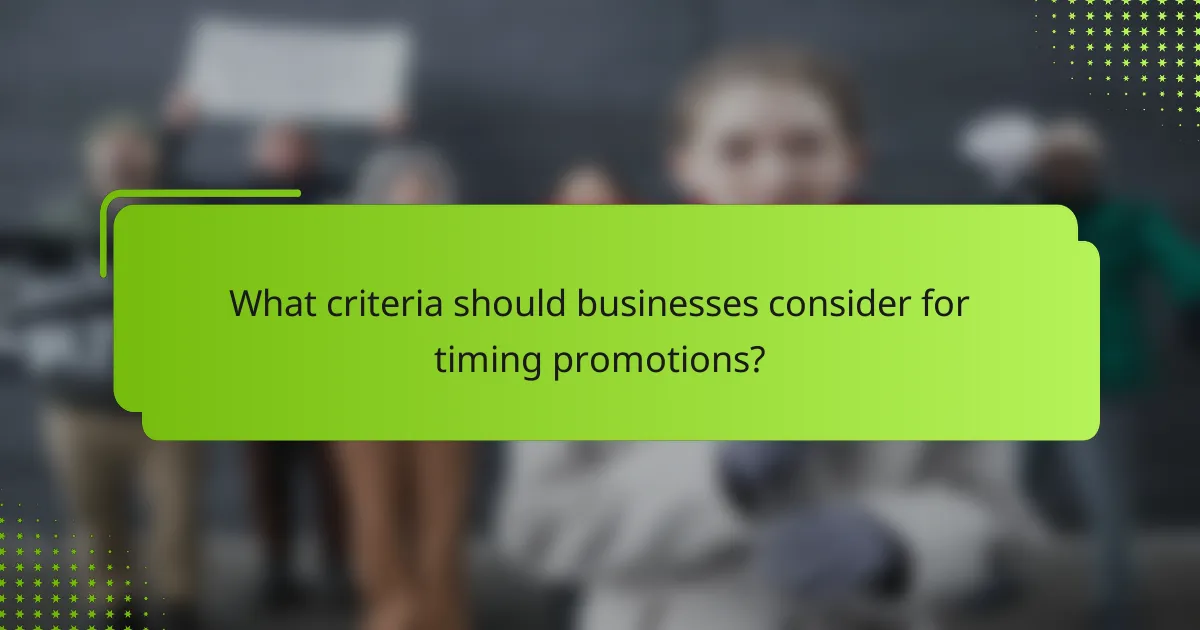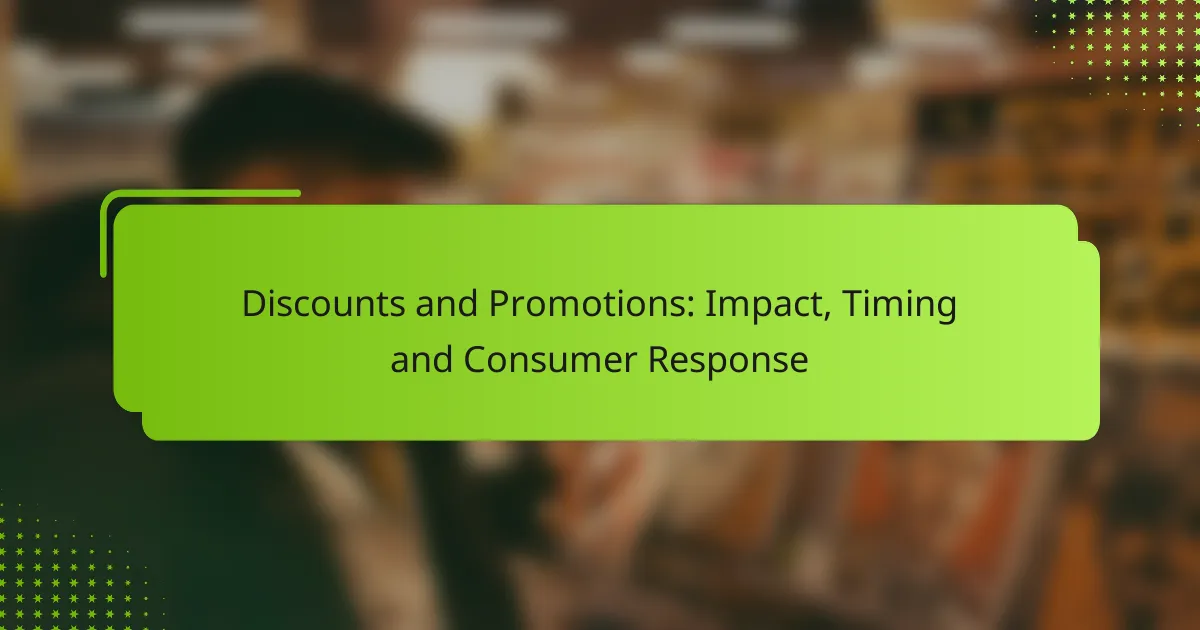Discounts and promotions play a crucial role in shaping consumer behavior by driving purchases and enhancing perceived value. Strategically timed offers can maximize sales impact and foster brand loyalty, making it essential for businesses to align promotions with consumer shopping patterns and seasonal trends.

How do discounts and promotions impact consumer behavior?
Discounts and promotions significantly influence consumer behavior by encouraging purchases and altering perceptions of value. They can lead to increased sales volume, shift brand loyalty, and affect how sensitive consumers are to pricing.
Increased purchase frequency
Discounts and promotions often lead to a higher frequency of purchases as consumers are motivated to buy more when they perceive savings. For example, a limited-time offer can create urgency, prompting consumers to act quickly to take advantage of the deal.
Retailers can leverage this behavior by timing promotions around holidays or events, which can boost sales during typically slower periods. Offering discounts on bundled products can also encourage consumers to buy more items at once.
Enhanced brand loyalty
Promotions can enhance brand loyalty by creating positive associations with a brand. When consumers feel they are getting a good deal, they are more likely to return for future purchases, fostering a sense of loyalty.
Brands that consistently offer valuable promotions can cultivate a loyal customer base, as consumers may prefer them over competitors. However, it is essential to balance discounts with perceived value to avoid eroding brand equity.
Price sensitivity variations
Consumer price sensitivity varies widely based on factors like income, product type, and market conditions. Discounts can attract price-sensitive shoppers, who may only purchase items when they are on sale.
Understanding the target audience’s price sensitivity can help businesses tailor their promotional strategies effectively. For instance, luxury brands may use exclusivity rather than discounts, while everyday products might rely on frequent sales to drive volume.

When is the best time to offer discounts and promotions?
The best time to offer discounts and promotions typically aligns with consumer shopping behaviors, seasonal trends, and specific events. Timing can significantly influence consumer response and sales performance, making it essential to strategically plan promotions throughout the year.
Seasonal sales periods
Seasonal sales periods, such as spring, summer, fall, and winter, provide excellent opportunities for discounts. Retailers often align promotions with seasonal changes, offering items that are in demand during specific times of the year. For example, clothing retailers may discount winter apparel at the end of the season to clear inventory.
Common seasonal sales include back-to-school promotions in late summer and holiday sales in December. These periods can see discounts ranging from 20% to 50% or more, depending on the product category and competition.
Holidays and special events
Holidays and special events like Black Friday, Cyber Monday, and Valentine’s Day are prime times for discounts. Consumers actively seek deals during these occasions, making them ideal for retailers to boost sales. Promotions during these events often lead to significant increases in foot traffic and online visits.
For instance, many retailers offer substantial discounts, sometimes exceeding 30%, during Black Friday sales. Planning promotions around these dates can enhance visibility and attract a larger customer base.
End-of-season clearance
End-of-season clearance sales are crucial for retailers looking to make room for new inventory. These sales typically occur at the end of a season, allowing businesses to sell off remaining stock at reduced prices. Discounts can be steep, often ranging from 40% to 70%, depending on how much inventory remains.
Retailers should consider timing these clearances just before the new season begins, ensuring they maximize sales while minimizing leftover stock. This strategy not only helps in inventory management but also attracts bargain-hunting customers eager for deals.

What types of discounts and promotions are most effective?
Effective discounts and promotions can significantly influence consumer behavior and boost sales. The most impactful types include percentage-off discounts, buy-one-get-one-free offers, and limited-time flash sales, each serving different marketing strategies and customer motivations.
Percentage-off discounts
Percentage-off discounts are a straightforward way to attract customers by reducing the price of products or services by a specific percentage. Commonly seen as 10% to 50% off, these discounts create a sense of urgency and value, encouraging consumers to make a purchase.
When implementing percentage-off discounts, consider the overall pricing strategy and profit margins. Offering a discount that is too steep may erode profits, while a modest discount can still entice buyers without compromising revenue. For example, a 20% discount on a $100 item reduces the price to $80, making it more appealing.
Buy-one-get-one-free offers
Buy-one-get-one-free (BOGO) offers incentivize customers to purchase more by providing an additional item at no cost. This type of promotion can be particularly effective for fast-moving consumer goods, where customers perceive added value in receiving a free product.
When using BOGO promotions, ensure that the items offered are complementary or frequently purchased together. For instance, a BOGO deal on shampoo can encourage customers to buy more than they initially intended, increasing overall sales volume. However, be cautious of potential inventory issues that may arise from increased demand.
Limited-time flash sales
Limited-time flash sales create urgency by offering discounts for a short period, often ranging from a few hours to a couple of days. This tactic can drive quick sales spikes as consumers rush to take advantage of the offer before it expires.
To maximize the effectiveness of flash sales, use targeted marketing strategies to reach your audience, such as email alerts or social media announcements. Highlighting the time constraint can enhance the urgency, prompting quicker decision-making. However, ensure that the discounts are significant enough to motivate action; otherwise, consumers may overlook the offer.

How do consumers respond to different promotional strategies?
Consumers respond to promotional strategies based on emotional engagement, perceived value, and social proof. Understanding these factors can help businesses tailor their marketing efforts to maximize effectiveness and drive sales.
Emotional engagement with promotions
Emotional engagement plays a crucial role in how consumers react to promotions. When promotions evoke positive feelings, such as excitement or joy, they are more likely to motivate purchases. For instance, limited-time offers can create a sense of urgency that enhances emotional involvement.
Businesses can enhance emotional engagement by using storytelling in their promotions. Sharing relatable narratives or highlighting customer testimonials can foster a deeper connection with potential buyers, making them more inclined to respond positively to the offer.
Perceived value of discounts
The perceived value of discounts significantly influences consumer behavior. When consumers believe they are receiving a good deal, they are more likely to make a purchase. Discounts that are clearly communicated, such as “30% off” or “Buy one, get one free,” can enhance this perception.
To maximize perceived value, businesses should consider the context of the discount. For example, offering a discount during a holiday season or in conjunction with a popular event can increase its attractiveness. Additionally, ensuring that the original price is visible can help consumers appreciate the savings more.
Impact of social proof on purchasing
Social proof, such as reviews and testimonials, significantly impacts consumer purchasing decisions. When potential buyers see that others have had positive experiences with a product or service, they are more likely to trust the brand and make a purchase. This is particularly effective when promotions are accompanied by customer feedback.
To leverage social proof, businesses should prominently display customer reviews and ratings alongside promotional offers. Highlighting user-generated content, such as photos or videos of satisfied customers, can further enhance credibility and encourage potential buyers to take action.

What criteria should businesses consider for timing promotions?
Businesses should consider market trends, competitor activities, and seasonal factors when timing promotions. These criteria help ensure that promotions resonate with consumers and maximize sales opportunities.
Market trends analysis
Understanding current market trends is crucial for effective promotion timing. Businesses should analyze consumer behavior, preferences, and spending patterns to identify peak shopping periods. For example, promotions aligned with holidays or major shopping events like Black Friday can significantly boost sales.
Utilizing tools like Google Trends or social media analytics can provide insights into what products are gaining popularity. This data can help businesses decide when to launch promotions for maximum impact.
Competitor activity monitoring
Monitoring competitor activities is essential for timing promotions effectively. Businesses should keep an eye on when competitors are running their promotions, as this can influence consumer expectations and purchasing decisions. If a competitor launches a significant discount, it may be beneficial to adjust your own promotional schedule accordingly.
Regularly reviewing competitors’ marketing strategies can reveal patterns in their promotional timing. This information can help businesses position their offers strategically to capture consumer interest and avoid direct competition during peak promotional periods.



